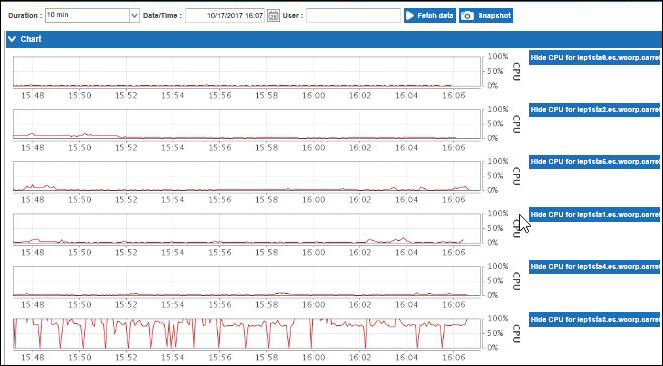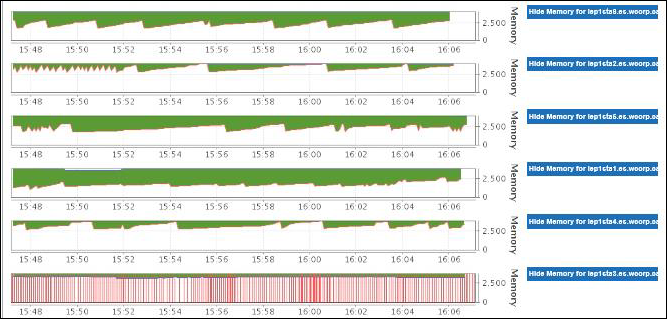This is one of the technical infrastructure data gathering methodologies and performance recommendations for server machines. The full list is defined in the Server Environment Recommendations topic here.
The load of the systems in the cluster can be analyzed using the STEP Admin Portal.
- When the STEP server load is high, the performance is degraded and further actions are required.
- When the STEP environment is a cluster environment, and one of the systems in the cluster is not balanced, performance is degraded and further actions are required.
Use these steps to analyze the CPU and Memory load and distribution of the STEP Application Servers:
- From the Start Page, click the System Administration button.
- Supply the login credentials and click the Login button.
- On the Activity tab, click the Fetch data button to load CPU, Memory, and Thread data.
For more information, refer to the Activity topic in the Administration Portal documentation here.
For example, the CPU load of the servers may look like the following image:

The CPU load reported above is unbalanced on the different servers as part of the cluster. Mainly, the last server lep1sta3.es, is doing all the work and the rest of the servers are hardly loaded.
In another example, the Memory load of the servers may look like the following image:

The memory load reported above is unbalanced on the different servers as part of the cluster. Mainly, the last server lep1sta3.es is doing all the work and the rest of the servers are hardly loaded.
In these examples, the server lep1sta3.es is running back-to-back garbage collection due to the high load, potentially combined a too small heap-allocation. So, in this example, the recommendation is to analyze the heap size further and determine if it is configured correctly.
Additionally, there seems to be incorrect load balancing between the servers in the cluster for the background processes. The system selects which of the application servers should handle the background processes. Therefore, it is also recommended to further analyze the load balancing.